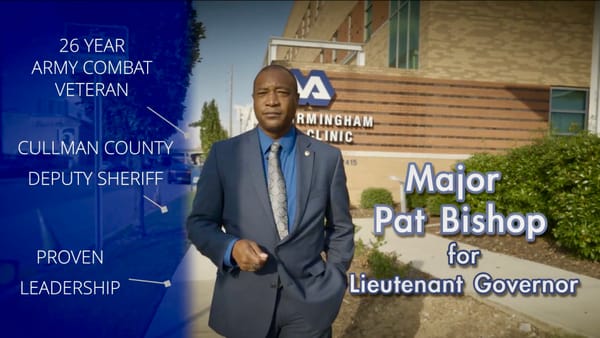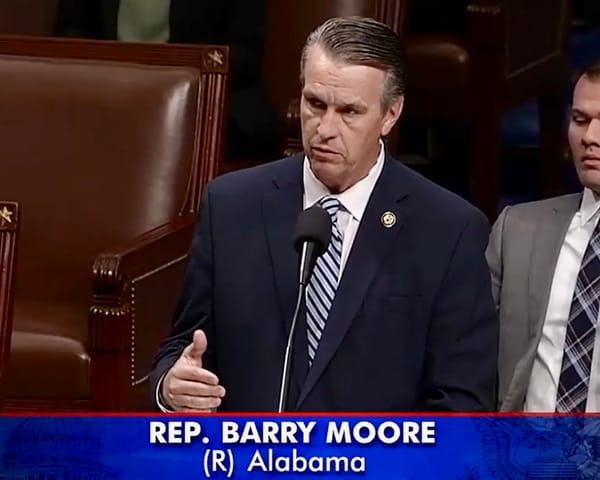New BRIC Act Aims to Deliver Disaster Relief More Fairly, Especially for Rural Communities
Figures, Edwards sponsor bipartisian bill to overhaul FEMA disaster mitigation funding process

Rural towns and small counties hit hardest by floods, hurricanes, and tornadoes could soon have a more reliable path to federal disaster funding. A bipartisan bill introduced by U.S. Representatives Shomari C. Figures (D‑AL2) and Chuck Edwards (R‑NC) would overhaul how FEMA distributes its hazard mitigation grants, replacing the recently canceled BRIC program with a more equitable formula that prioritizes fairness over competition.
The Building Resilient Infrastructure and Communities (BRIC) Act would move away from the winner-take-all grant model that critics say left rural and low-capacity communities behind. Under the new structure, federal mitigation dollars would be split three ways: one-third distributed equally among all states and territories, one-third based on population, and one-third directed to the areas most at risk from disasters that threaten critical infrastructure such as power, water, and hospitals.
“This bipartisan bill ensures that rural communities and areas frequently impacted by natural disasters have greater access to the funding they need to strengthen critical infrastructure,” said Rep. Figures in a statement.
“This legislation takes meaningful steps to improve the accessibility and effectiveness of BRIC funding by prioritizing fairness in distribution and enhancing support for local governments,” added Rep. Edwards, whose western North Carolina district is still recovering from Hurricane Helene’s devastating floods last September.
The new legislation comes just months after FEMA abruptly shut down the original BRIC program in April 2025, ending a key federal tool for disaster preparedness. Launched in 2020 under the 2018 Disaster Recovery Reform Act, the original BRIC program awarded billions in competitive grants to communities seeking to build more resilient infrastructure. However, the process heavily favored large cities with grant-writing teams and technical consultants, while many rural and disadvantaged communities struggled even to apply.
Demand for BRIC funding had far outpaced supply. In 2023 alone, FEMA received more than $2 billion in applications for just $1 billion in available funding. An independent review found that 78% of the awards went to high-capacity counties on the East and West Coasts, leaving many interior and Gulf states behind. The Natural Resources Defense Council noted that smaller towns often “lack the time, staff and technical know-how even to apply,” effectively excluding them from the program.
Those disparities became painfully clear after Hurricane Helene struck North Carolina on September 27, 2024, dumping more than a foot of rain on mountain communities, washing out roads and bridges, and killing at least ten people. Similar storms have battered Alabama’s Gulf Coast and Mobile Delta in recent years, highlighting the urgent need for better access to federal resources.
FEMA cited concerns about inefficiency, duplication, and political bias when it canceled the original BRIC program earlier this year. Nearly all grant awards issued between 2020 and 2023—worth more than $3.6 billion—were frozen or revoked, leaving hundreds of shovel-ready projects in limbo. The move sparked lawsuits from at least 20 states and criticism from both parties.
The BRIC Act offers a new model designed to prevent that kind of disruption. States would receive a predictable base amount of funding each year, allowing local officials to plan ahead rather than scramble for competitive awards. Economically distressed rural counties would still be eligible for up to 90% federal cost-sharing—consistent with existing FEMA policy—while high-impact projects could continue to compete for grants from the population- and risk-based funding pools.
The proposal has already drawn support from the National Association of Counties, BuildStrong America, and the Alabama Association of Emergency Managers. Sarah Edwards of the Southern Environmental Law Center praised the bill for “easing the process for low-capacity jurisdictions to access crucial hazard mitigation funding,” adding that small towns “must be empowered to implement risk-reduction measures that matter most to them.”
Figures and Edwards say they plan to seek a hearing in the House Transportation and Infrastructure Committee before the fall hurricane season. With broad backing from both coastal Democrats and inland Republicans, the bill is expected to move quickly when Congress returns from its August recess.




